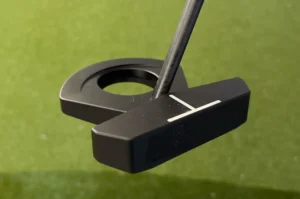Faced with a tricky tight lie in the rough or fairway around the greens? Many golfers dread these challenging situations, as it can be difficult to make solid contact and escape with an up and down. Even the pros struggle to get up and down from tight lies at times.
The key is having the proper technique and making smart adjustments to stance, ball position, club selection and swing mechanics. Follow these essential chipping tips to conquer tight lies with confidence.
Adjust Your Stance for Tight Lies
The most important fundamental is an adjusted stance when chipping from tight lies in the rough or fairway. You need to make changes to your normal chipping setup to account for the lack of space below the golf ball.
Here are key stance adjustments to make:
Play the Ball Back: Position the golf ball back in your stance, closer to your trail foot rather than normal middle or forward ball position. This helps you strike down on the ball.
Open Your Stance: Widen your stance so your feet are slightly farther apart than normal. This allows room to swing down through impact.
Weight Forward: With the ball back, distribute 60-80% of your weight onto your front foot at address. Your weight should stay forward during the swing.
Narrow Grip: Use a slightly narrower grip to prevent flipping or scooping the ball.
Getting in an athletic, stable stance adapted for tight lies is crucial for making solid contact.
Optimize Clubface Angle and Ball Position
Along with stance, you also must optimize clubface angle and ball position based on the specific conditions of the tight lie.
Check the Lie: Determine if the lie is bald, burnt, wet, muddy or a combination. Probe with a club to test the tightness.
Pick Bounce: Choose a club with the proper bounce angle for the lie. More bounce helps the club glide through grassy rough or mud. Less bounce is better for tight, burnt lies.
Ball Position: Position the ball in the middle or back of your stance depending on lie severity. Deeper rough means play it farther back.
Open Clubface: Set up with the clubface aimed left of your target. For a righty, this means the clubface points right of the target at the address.
Dialing in the proper clubface angle and ball position gives you the best chance to make flush contact from a tight lie.
Alter Your Backswing for Tight Lies
When chipping from tight lies, you must make adjustments to your normal chipping backswing. A shorter, steeper backswing helps you strike down effectively.
Follow these backswing tweaks:
Make it Short: Limit your backswing to about 3/4 of your normal length. Keeping it compact prevents overswinging.
Keep it Steep: Don’t hinge your wrists much on the backswing. Maintain the clubface angle as you lift the club up.
Minimize Lower Body Motion: Avoid too much hip turn or weight shift back. Pivot mostly with your upper body.
Point Shaft at Hip: At the top, point the club shaft into your front hip pocket with the toe pointing up.
An abbreviated, steep backswing sets you up for a proper downswing into tight lies.
Strike Down Through Impact
The key difference in your chipping downswing and impact position is you must strike down more steeply to compress the golf ball from a tight lie.
Here are impact adjustments:
Lead Shoulder Points Down: Your lead shoulder should point down towards the ball, increasing your angle of attack.
Hands Ahead of Ball: Maintain your forward shaft lean with hands ahead of the ball at impact.
Compress Down: Swing through impact by releasing your wrists and striking down on the ball.
Follow Through Short: Follow through is abbreviated, with the club finishing low to the ground.
Making a slightly steeper, more downward blow compresses the ball effectively from tight lies.
Select the Right Club for Tight Lie Shots
Choosing the proper golf club is key for chipping success from tight lies. You want a club with enough loft to get the ball airborne but not too much bounce.
Here are tight lie club considerations:
Less Than Wedge: Opt for a 9-iron, pitching wedge or gap wedge instead of a lob wedge. The extra loft helps get it up.
Low Bounce: Pick clubs with less bounce, especially for tight, burnt lies. Bounce can cause digging.
Enough Loft: Don’t go lower than a 6-iron. You need loft to pop the ball up from a compressed lie.
Chip and Run: For tight lies in the fairway, use a 7-8 iron to chip and run it along the ground. Easier than a full swing.
Having the right club in hand breeds confidence in escaping tricky tight lies.
Troubleshooting Thin Shots from Tight Lies
It’s common to hit thin shots from tight lies by contacting the ball too early and sending it racing across the green. Use these troubleshooting tips to fix thin shots:
Ball Position Too Far Forward: Ensure ball is back in stance, closer to trail foot.
Hands Back at Impact: Concentrate on keeping hands ahead of clubhead through impact.
Weight Back: Thin shots often result from weight falling backward. Focus on forward weight.
Too Much Wrist Hinge: Limiting wrist hinge prevents the club from bottoming out early.
Too Upright: If your upper body is too upright, it steepens the swing too much. Have some knee flex.
Clubface Closed: A closed clubface increases risk of thin shots. Keep face open at address.
Making adjustments to ball position, hand position, weight shift and clubface angle will get you back to solid contact in no time.
Practice Drills for Tight Lie Chipping Skill
Improving your chipping technique from tight lies requires quality practice. Incorporate these drills into your short game training:
Hit Down Iron Drill: Place an iron directly behind the ball to force yourself to strike down through impact.
Impact Bag Drill: Hit an impact bag to rehearse correct hands-forward position.
Foot Spray Drill: Spray your clubface with foot spray to check if you are making ball-first contact.
Buried Ball Drill: Bury a ball halfway in the ground and practice hitting it cleanly.
No Wrist Hinge Drill: Make practice swings keeping the triangle of arms and club fixed to prevent hinging.
Weight Forward Drill: Place a ball under each foot, concentrating on keeping weight left during the swing.
Regularly performing targeted tight lie chipping drills ingrains sound technique.
Factor Other Lies and Conditions into Short Game Strategy
While tight lies are challenging, you also must adjust your chipping technique for other common lies around the green.
Downhill Lies: Play the ball back and make a steeper downswing.
Uphill Lies: Play the ball up and make a shallower swing.
Deep Rough: Use a more lofted club with extra bounce.
Fairway Chips: Opt for less loft and a chip and run technique.
Wet Conditions: Pick a club with extra bounce to prevent digging.
Hardpan Lies: Favor a less lofted club that can be swung smoothly along the surface.
Analyze all lie variables and select the proper technique and club to match the conditions.
Key Takeaways for Chipping Success from Tight Lies
Conquering tight lies requires adapting your setup, mechanics and strategy. Follow these essential tips for tight lie chipping success:
Play the ball back in your stance, widen your stance and get your weight forward.
Choose a club with appropriate bounce and minimal loft.
Make a short, steep backswing with limited lower body motion.
Maintain forward shaft lean and strike down through impact.
Keep the clubface open to prevent blades and stay aggressive.
Practice impact drills regularly to improve strike and technique.
With the right adjustments and focused practice, you can escape even the trickiest tight lies with confidence. Mastering tight lie chipping leads to more up and downs, lower scores and added enjoyment on the course.








